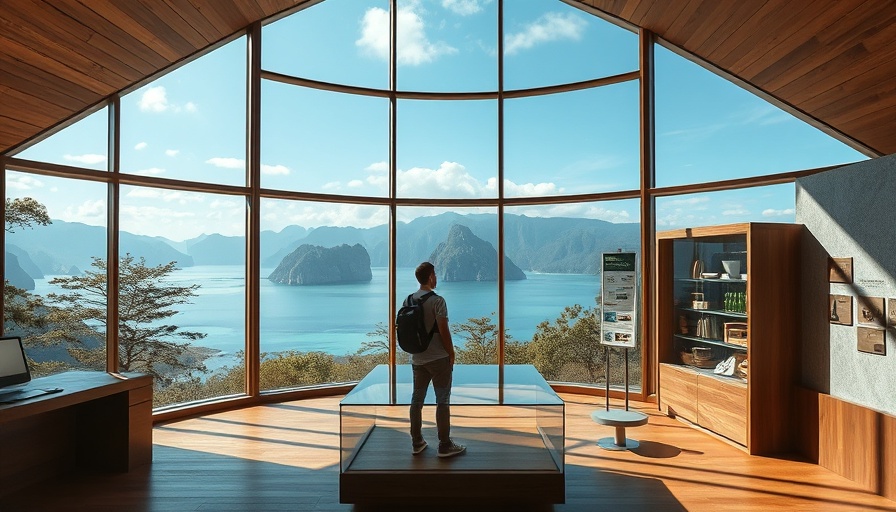
A New Landmark for Community and Ecology
The recent completion of the Eco-Museum by Kaan Architecten marks a pivotal moment in the ecological and social landscape of Niterói, Brazil. Located on the edge of the Piratininga Lagoon, this two-storey structure, with its striking cantilevered roof, not only stands as a piece of architectural ingenuity but also as a vital hub for the community and environment. Designed as part of a larger initiative to restore the lagoon, the Eco-Museum embraces ecological principles through sustainable practices and community-focused design.
Why the Eco-Museum Matters
The Eco-Museum functions more than simply as an exhibition space; it is a beacon of hope for the local ecosystem and its inhabitants. The project, supported by the Municipality of Niterói, aims to rehabilitate the 720,000 square meter Piratininga Lagoon through ecological restoration techniques. These include establishing native plant gardens that serve to filter and purify the water, creating an opportunity for enhanced biodiversity.
Your Connection to Nature: Filtering Gardens
Integral to the lagoon’s revitalization are the filtering gardens, innovative landscapes designed to intercept upstream pollution. This approach actively engages local stakeholders, emphasizing community involvement in ecological preservation. As described by the architects, these gardens allow visitors to explore and connect with wetlands, a vital yet often neglected ecosystem. This aligns with broader trends in landscape architecture and environmental design that seek to educate the public about the importance of biodiversity.
Architectural Highlights: Melding Indoor and Outdoor Spaces
The Eco-Museum’s design showcases a synthesis of community-centric architecture with the natural environment. The overhanging roof not only defines the museum's structure but enhances natural light, creating a welcoming environment that merges indoor and outdoor experiences. Sliding doors and windows expand these connections, offering breathtaking views of the surrounding park and lagoon. This open design is particularly aimed at fostering a sense of belonging among visitors while supporting environmental education for local children.
Contributions to Community Well-Being
As Renata Gilio of Kaan Architecten notes, this project is centered around community building and environmental awareness. The Eco-Museum is envisioned as the 'beating heart' of the neighborhood, serving various functions from hosting local events to providing educational programming. This merging of purpose illustrates a move toward urban spaces that prioritize ecological health and community cohesion, exemplified by the range of facilities offered within the museum, such as exhibition areas, a restaurant, and kayak storage for lagoon exploration.
Conclusion: A Model for Future Projects
The Eco-Museum is not just an architectural achievement, but a model of sustainability and community outreach. As similar initiatives emerge—like Tatiana Bilbao Estudio’s project in Mexico—the importance of such developments becomes increasingly evident. The Eco-Museum in Orla Piratininga Park represents a crucial step forward in fostering social inclusion while actively engaging with the pressing issues of ecological restoration.
As community members and potential visitors, your involvement will further this initiative's success. Explore local events, partake in educational programs, and discover how you can contribute to maintaining the balance between urban development and environmental stewardship.
 Add Row
Add Row  Add
Add 




Write A Comment